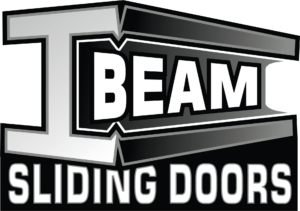About
I-Beam Sliding Doors
I-Beam Sliding Doors was developed in the fall and winter of 2012 and 2013 by founder Jon Fehr.
There were simply too many issues with sliding door failure, and the industry failed to upgrade door systems to meet the demand of the increased size of doors and functionality.
I-Beam Sliding Doors always has the consumer's best interest at heart. Our doors are designed for the builder and the user and is of the utmost priority.
Unlike our competitor's components, our sliding doors are engineered systems. We will always invest in better systems and upgrades, making research and testing a priority.
We strive to be the industry leader for sliding and swing out door systems.
Everything, no matter it's greatness, can always be improved.
Our Doors. Other Doors.
Cars.
Trucks.
Vans.
All vehicles. But each has their purpose.
As with doors.
 Jon Fehr, Owner
Jon Fehr, Owner
Contact Jon by email
Hinged Door
Description:
Most common door used for entry. The #1 type of door system for small opening closure. It is used for large entry but not as common and not as practical as other door systems.
Advantages:
Efficient
Secure
Versatile
Easy to use
Disadvantages:
Limited to size of door
Wood construction; exterior rot quickly
Roll-up (Overhead Door)
Description:
Most common door used for garage openings; versatile in many ways and efficient system for most large entry and building closure systems.
Advantages:
Efficient for mid to large openings
Energy efficient
User friendly, operating systems
Engineered systems
Disadvantages:
Cost - can be expensive
Lose headroom, need 12-14" clearance
Can be expensive to maintain
Lots of parts and pieces, labor intensive
Sliding Door (I Beam Systems)
Description:
Most commonly used for patio doors; Very common agriculture building door system and large airplane hangar systems. The simplest and most economical operating system for manually or electronically opening or closing a building.
Advantages:
Most efficient manual operation
Not labor intensive
Most cost effective
Most practical for large openings
No loss of headroom
Most reliable door system; least amount of maintenance
Disadvantages:
Can comeout of adjustment, easiest to adjust
Difficult to seal
Coil Up Door
Description:
Mainly used for mini-storage buildings. Lighter duty for small to mid-sized door opening.
Bi-fold & Hydraulic
Description:
Bi-fold: Mainly used for airplane hangar and agricultural buildings. Made primarily for large openings.
Hydraulic single swing panel: Before roll-up doors became practical these door systems were common for garages. Today they're primarily used for large openings on agriculture buildings and airplane hangars; made primarily for large openings.
Advantages:
Practical for large opening closure
Can Insulate and Seal
Easy Operation
Disadvantages:
Expensive
Labor intensive
Cannot operate manually, must be powered to operate
High maintenance
Scary - lots of weight hanging above your head
Building must be compatible for door system
